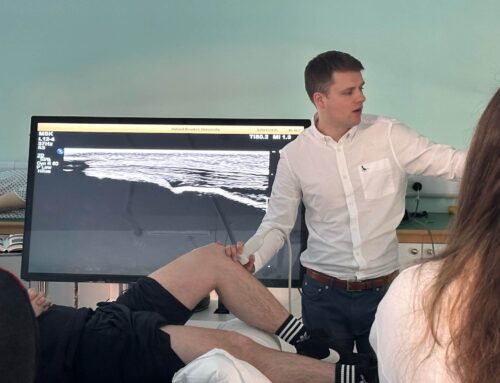Strength and Conditioning
Written by: Tom Stainer
Strength and conditioning has shown to reduce sports injuries by a third, and overuse injuries by 50%. Comparatively, stretching reduces risk of injury by 4%. Alongside monitoring training load, strength and conditioning has the greatest effect on injury prevention.
So what is Strength and Conditioning (S&C)?
S&C is utilising exercise therapy to improve a person’s speed, strength, endurance, range of motion and muscle co-ordination. The aim is to improve performance of a given task, often this can be based on your normal daily activities.

How does strength and conditioning relate to my injury?
When we have pain in any area, our brain tries to send signals in order to protect the injured area, in doing so it may reduce: the strength, endurance, flexibility and co-ordination of the muscles in the local area. This results in the injured area not being able to tolerate forces put through it. Resulting in the individual losing function or the ability to do certain tasks.
Loss of function can last a lot longer than the healing process of the actual injury. Recent studies have found beneficial results in loading muscle injuries, as early as two days post-injury. The early loading, has seen to significantly improve return to sport times, even when compared to results from loading nine days post-injury.
Can strength training be harmful for my injury?
Under the correct guidance, strength training is not harmful for injuries, it is actually quite the opposite. Resistance training is known to stimulate what we call cellular remodelling; an essential process within healing, which allows our bodies to remove old damaged cells and replace them with new ones. Cellular remodelling takes place in bone, ligament, tendon, and muscle cells.
In some cases, if you over-work too soon, then this may negatively impact upon your injury. That’s why our advice would be to work with your physiotherapist here at Elite, in order to prevent further injury and rehabilitate from current injuries. Your physiotherapist will create a personalised rehabilitation plan, which will be progressively loaded. We aim to constantly challenge your injured area, in a healthy progressive way.
If you are recovering from an injury and are looking to regain muscle wastage, you have a new or chronic injury that you want to build strength around, or if you are interested in preparing your body, and conditioning for when sports return very soon then feel free to call us on 01296 437717 to book an assessment.
References
- Bayer, M.L., Magnusson, S.P., Kjaer, M., (2017) ‘Tendon Research Group Bispebjerg. Early versus Delayed Rehabilitation after Acute Muscle Injury’. N Engl J Med. 377(13) pp.1300-1301. doi: 10.1056/NEJMc1708134. PMID: 28953439.
- Lauersen, J.B., Bertelsen, D.M. and Andersen, L.B., (2013) ‘The effectiveness of exercise interventions to prevent sports injuries: a systematic review and meta-analysis of randomised controlled trials’. British Journal of Sports Medicine. 48(11) pp. 871–877. Available at: https://bjsm.bmj.com/content/48/11/871
- Zhang, J.. and Wang, J.H.C., (2013) ‘The Effects of Mechanical Loading on Tendons – An In Vivo and In Vitro Model Study’. PLoS ONE. 8(8) pp. 717-740.



